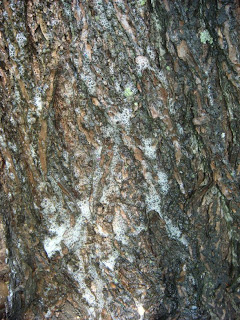Spring Ephemerals: Amazing Hepatica
By: Lisa Liotta
 But, for now, it might look a little barren. However, if you
slow down as you walk through the forest and look closer…..closer……look down to
the ground, you might just discover the first wildflowers of the year! Tiny Hepatica can be found among the dead leaves
growing only about four to six inches tall, heralding the arrival of spring with
their beautiful delicate blooms (see left).
But, for now, it might look a little barren. However, if you
slow down as you walk through the forest and look closer…..closer……look down to
the ground, you might just discover the first wildflowers of the year! Tiny Hepatica can be found among the dead leaves
growing only about four to six inches tall, heralding the arrival of spring with
their beautiful delicate blooms (see left).
Hepatica are often the first spring ephemerals to flower in
Vermont. The blooms can be white, pink,
purple and almost blue. Spring ephemerals are a special
kind of wildflower that begin growing and often flowering as soon as the snow
melts. The flowers of spring ephemerals are
typically small and close to the ground.
The plants expend all of their energy into quickly producing buds, then
blooms and seeds all within the approximate 6-week window when the sun shines
on the forest floor.
Now, take look at these Hepatica a little closer:
Can you see the tiny hairs that cover the stems? These hairs
prevent ice condensation and act as an insulator to the plant, protecting it
from damaging spring frosts. For a few nights
this week low temperatures will dip into the 20’s at Niquette Bay State Park on
the shores of Lake Champlain, but these plants have adapted to survive!
And, this clump below grows
up through last year’s leaves, which also provide insulation to the plant from
frost and freezing temperatures once the snow disappears by trapping warmer air
around the plant, and preventing frost from forming on the plant:
Hepaticas prefer to grow in alkaline soils which can be
found near limestone ledges or outcroppings.
At Niquette Bay State Park, you’ll find these flowers in bloom now along
the Ledges Trail as it approaches Lake Champlain. In another week or two, Hepatica will be
visible throughout the park and Vermont.
Don’t delay if you’d like to see their performance, they’ll only be
featured for a few weeks!
*Join Lisa Liotta for a Spring Wildflower Hike on Saturday, April 26 from 10:00am - 12:00pm at Niquette Bay State Park. To RSVP call 802-893-5210 or send an email to niquette.bay@state.vt.us. For more information, visit the Vermont State Parks events page at: http://vtstateparks.com/htm/events.htm
*Join Lisa Liotta for a Spring Wildflower Hike on Saturday, April 26 from 10:00am - 12:00pm at Niquette Bay State Park. To RSVP call 802-893-5210 or send an email to niquette.bay@state.vt.us. For more information, visit the Vermont State Parks events page at: http://vtstateparks.com/htm/events.htm





.jpg)
.jpg)
Comments
Post a Comment
Feel free to let us know what you think.